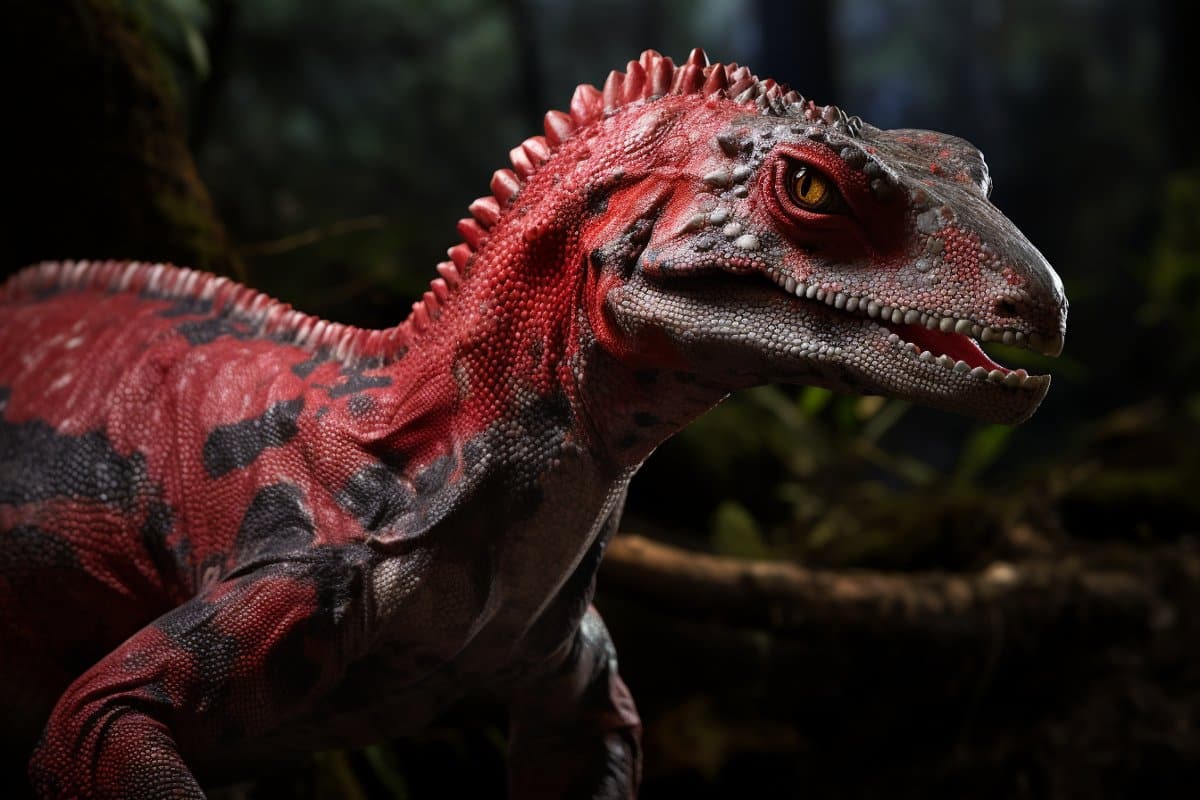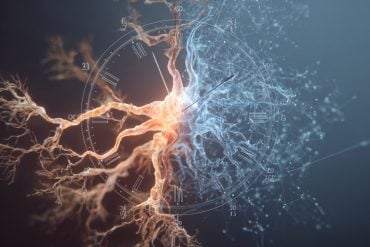Summary: New CT scans of the Thescelosaurus neglectus, known as Willo, suggest it may have spent time underground, contrasting with its previously dull reputation.
Researchers found Willo had a limited hearing range but a powerful sense of smell and balance, similar to modern burrowing animals.
This plant-eating dinosaur’s anatomy, including its developed olfactory bulbs and sense of balance, hints at a lifestyle partially spent beneath the surface, offering a fresh perspective on dinosaur behaviors.
Key Facts:
- Willo’s CT scans show a brain and sensory structure unique among dinosaurs, indicating a possible underground lifestyle.
- The Thescelosaurus neglectus had poor hearing but an exceptional sense of smell and balance, traits common in today’s burrowing animals.
- The research, appearing in Scientific Reports, sheds new light on dinosaur lifestyles and could lead to interactive museum exhibits for educational purposes.
Source: North Carolina State University
A CT scan of an often-overlooked, plant-eating dinosaur’s skull reveals that while it may not have been all that “brainy,” it had a unique combination of traits associated with living animals that spend at least part of their time underground, including a super sense of smell and outstanding balance. The work is the first to link a specific sensory fingerprint with this behavior in extinct dinosaurs.
The dinosaur in question, Willo, is a specimen housed at the North Carolina Museum of Natural Sciences. Willo is a Thescelosaurus neglectus – a small (12 feet or 3.6 meters long) but heavy (750 pounds or 340 kilograms) herbivore that lived in what is now North America just before the end-Cretaceous mass extinction event, 66 million years ago.

Willo’s scientific name roughly translates to “wonderful, overlooked lizard.” But David Button, a former Brimley Postdoctoral Scholar at the North Carolina Museum of Natural Sciences and North Carolina State University, decided to look more closely at this “overlooked” dinosaur’s skull. Button is currently a research associate at the University of Bristol in the U.K.
Button used a CT scanner to reconstruct soft tissues in Willo’s skull – such as the brain and inner ear – that were lost to the fossilization process. Comparing these sensory structures to other dinosaurs and their living relatives allowed the researchers to determine the relative size of Willo’s brain, as well as what her senses of smell, hearing, and balance were like.
“The irony is that paleontologists generally think of these animals as pretty boring,” says Lindsay Zanno, associate research professor at NC State, head of paleontology at the North Carolina Museum of Natural Sciences, and co-author of the work.
“When we first looked at our results we thought, yeah, this animal is plain as toast. But then we took a big step back and realized there was something unique about the combination of Willo’s sensory strengths and weaknesses.”
Button and Zanno determined that T. neglectus’ hearing range was limited. The dinosaur could only hear about 15% of the frequencies humans can detect, and between 4% to 7% of what dogs and cats can hear. In particular, T. neglectus was bad at hearing high-pitched sounds.
“We found that Thescelosaurus heard low frequency sounds best, and that the range of frequencies it could hear overlaps with T. rex,” Zanno says.
“This doesn’t tell us they were adapted to hearing T. rex vocalize, but it certainly didn’t hurt them to know when a major predator was tooling about in the area. More interesting to us was the fact that these particular deficiencies are often associated with animals that spend time underground.”
Thescelosaurus balanced its poor hearing with an excellent sense of smell.
“We found that the olfactory bulbs – the regions of the brain that process smell – were very well developed in Thescelosaurus,” Button says. “They were relatively larger than those of any other dinosaur we know of so far, and similar to those of living alligators, which can smell a drop of blood from miles away.
Thescelosaurus may have used its similarly powerful sense of smell to instead find buried plant foods like roots and tubers. It also had an unusually well-developed sense of balance, helping it to pinpoint its body position in 3D space, another trait often found in burrowing animals.”
T. neglectus’ poor cognitive and hearing abilities, coupled with powerful arms and legs and overdeveloped senses of smell and balance, are all features characteristic of animals that spend time underground and/or engage in digging behaviors today.
“While we can’t say definitively that these animals lived part of their lives underground, we know that their ancestors did,” Button says. “This fact, together with their unique combination of sensory abilities, strongly suggests T. neglectus engaged in similar behaviors.”
“We still don’t know the sensory abilities of most dinosaurs,” Zanno says. “That makes it difficult to link these traits to specific lifestyles with confidence, but it also means there are plenty of cool discoveries to come.
“The idea that there might have been dinosaurs living under the feet of T. rex and Triceratops is fascinating. No matter what, we now know for certain that T. neglectus isn’t boring.”
The research appears in Scientific Reports. Button is corresponding author. Willo is currently on display at the North Carolina Museum of Natural Sciences. Visitors to the museum will soon be able to explore the 3D skull and hearing capabilities of Willo for themselves in an interactive exhibit being built for the new Dueling Dinosaurs experience due to open in 2024.
About this neuroscience research news
Author: Tracey Peake
Source: North Carolina State University
Contact: Tracey Peake – North Carolina State University
Image: The image is credited to Neuroscience News
Original Research: Open access.
“Neuroanatomy of the late Cretaceous Thescelosaurus neglectus (Neornithischia: Thescelosauridae) reveals novel ecological specialisations within Dinosauria” by Lindsay Zanno et al. Scientific Reports
Abstract
Neuroanatomy of the late Cretaceous Thescelosaurus neglectus (Neornithischia: Thescelosauridae) reveals novel ecological specialisations within Dinosauria
Ornithischian dinosaurs exhibited a diversity of ecologies, locomotory modes, and social structures, making them an ideal clade in which to study the evolution of neuroanatomy and behaviour.
Here, we present a 3D digital reconstruction of the endocranial spaces of the latest Cretaceous neornithischian Thescelosaurus neglectus, in order to interpret the neuroanatomy and paleobiology of one of the last surviving non-avian dinosaurs. Results demonstrate that the brain of Thescelosaurus was relatively small compared to most other neornithischians, instead suggesting cognitive capabilities within the range of extant reptiles.
Other traits include a narrow hearing range, with limited ability to distinguish high frequencies, paired with unusually well-developed olfactory lobes and anterior semicircular canals, indicating acute olfaction and vestibular sensitivity.
This character combination, in conjunction with features of the postcranial anatomy, is consistent with specializations for burrowing behaviours in the clade, as evidenced by trace and skeletal fossil evidence in earlier-diverging thescelosaurids, although whether they reflect ecological adaptations or phylogenetic inheritance in T. neglectus itself is unclear.
Nonetheless, our results provide the first evidence of neurological specializations to burrowing identified within Ornithischia, and non-avian dinosaurs more generally, expanding the range of ecological adaptations recognized within this major clade.






